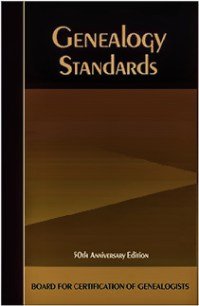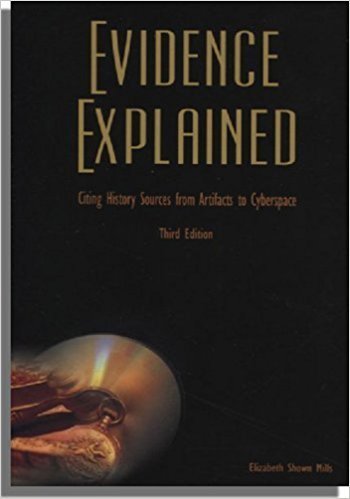I like Find A Grave, it’s a useful website. I say this with caution, however; not all information on Find A Grave is accurate. Online trees are notorious for being hotbeds of misinformation.
Find A Grave is accurate for the location of the cemetery, and for photos of the gravestone that provide names and dates. There can be errors, of course, but thankfully those are rare.
People, trying to be helpful, often post additional information on Find A Grave memorial pages, such as this person married that person, and their children include, and their parents were…but often without any sources. Where did they get this information, and is it accurate?
I have an ancestor with a certain name, and he has a grandson with the same name. The son/father between them has a different name than theirs. Someone has confused the grandfather and the grandson, and posted information that the grandson married a certain woman and had these named children. Just to make it more confusing, the grandson named his son after his father. (So the four generations of names appear similar to ABAB.) Without more information, one could easily confuse the families. However, the dates and the name of the wife are all wrong, because the Find A Grave memorial has the grandson (A2) matched with his own grandmother as spouse (who married A1)! I sent an email inquiry, and the person ignored me, and refuses to make any changes.
In another case, a person posted a memorial and they state the person is buried at this cemetery, but no photo of the gravestone is on the memorial page. I submitted a “photo request” and received an error report; the helpful volunteer (a different person than the one who posted the memorial) did some research with the cemetery records, and no burial for this person can be found at this cemetery. I sent an email inquiry to the person who created the online memorial, asking where they got the information this person is buried at this cemetery, along with the findings of the helpful volunteer. The person practically yelled at me, and claimed “I don’t know where I got this information, I get info from lots of different places. I stand by my posting! Good luck finding your own research!” In other words, they wash their hands of the entire ordeal and accept no responsibility. They uploaded the data from an Excel spreadsheet, with thousands of other names. This person is clearly more interested in the numbers than in the accuracy. They want to be known as a “contributor,” but clearly a “researcher” or “genealogist” they are not.
This cautionary tale provides a few lessons. First, be kind to your fellow genealogists. Yelling at people is not nice, and just drives people away. I never want to communicate with this person again. Second, cite your sources. Keep track of where you get information, and pass this information on. Sources are important, and I am a little amazed at the number of people who do not realize this, with years in the game and still ignoring this simple advice.
And thirdly, do not post information that is inaccurate. Prove your stories and trees before you publish them. Similar stories abound regarding people putting up an online tree without sources, then people with no understanding or education copy that tree countless times and it spreads like a virus. Inaccurate information is bad information, do not share it, which means do not place it online anywhere. Verify your “facts” before you call them FACTS.
If someone points out an inaccuracy, be open to changing your story or your facts with new evidence. After all, this is one of the principles of good genealogy, as published in Genealogy Standards (more about that below). Yelling at someone because their facts dispute yours, telling them they are wrong, has no place here.
I must add that most people are not mean at all; most people are simply uninformed and need a little teaching. The fine line is how to do a little teaching without driving people away or sounding condescending. Mostly, I find people trying to help people. But some people…
So, here’s some ideas on why citing sources is so important, and how to do it right.
- General ideas include this article
- And Cyndi’s List has some good information
- But my favorite is Judy Russell’s comments on The Legal Genealogist which includes a suggestion to refer to these books, among others.


Elizabeth Shown Mills, Evidence Explained: Citing History Sources from Artifacts to Cyberspace, 2d ed. (Baltimore : Genealogical Publ. Co., 2009)
Both are available on amazon.
I know I’m giving my age away by referencing the old “Be Kind, Rewind” mantra of the old VHS videotapes back when we had video stores to rent movies. But really, citing sources is a way to be kind, and help others find the wonderful info that you already found, and want to share with others.
So, how do I treat information I find on Find A Grave and online trees? If it is verifiable information with sources, I go find the source myself (easy to do if they provided source citations), and if it’s right, I then use that source with my own tree (and cite that source myself!). If there is no source, then I must do my own research. I use the info I found online as a “clue” and try to go prove it. Sometimes it is helpful to have that clue. I may find a US Federal Census (1850 and later are the only ones that list the entire family) and look up the suggested parents, and I may indeed find the family I am looking for. Great! They were accurate with their info, but now I have a source to verify it (and cite that source myself!). If I am unable to prove it, I may even email the person and ask how they know this fact is true. But experience has taught me to expect a wide range of responses, and even no response at all. Some people still seem to be offended if you ask. But ask you must, or go research it yourself to answer it yourself.
Citing Sources is a basic, fundamental thing. To be honest, we all struggle with it. And to be more honest, I didn’t do it in my early genealogy research, either. This is a lesson we all had to learn. But I quickly learned that it’s just like a footnote in the term papers I used to write in high school and college.
So, “Be Kind, Help Find” with a simple footnote. After all, it is the Genealogy Standard.